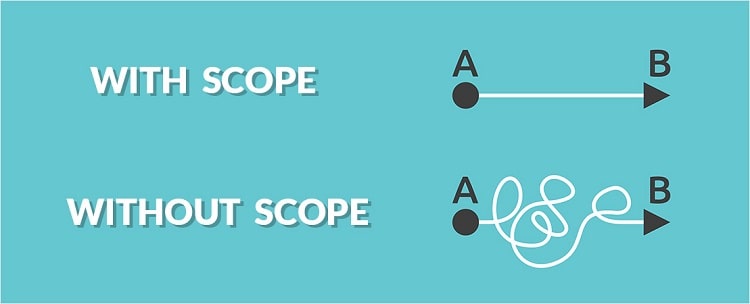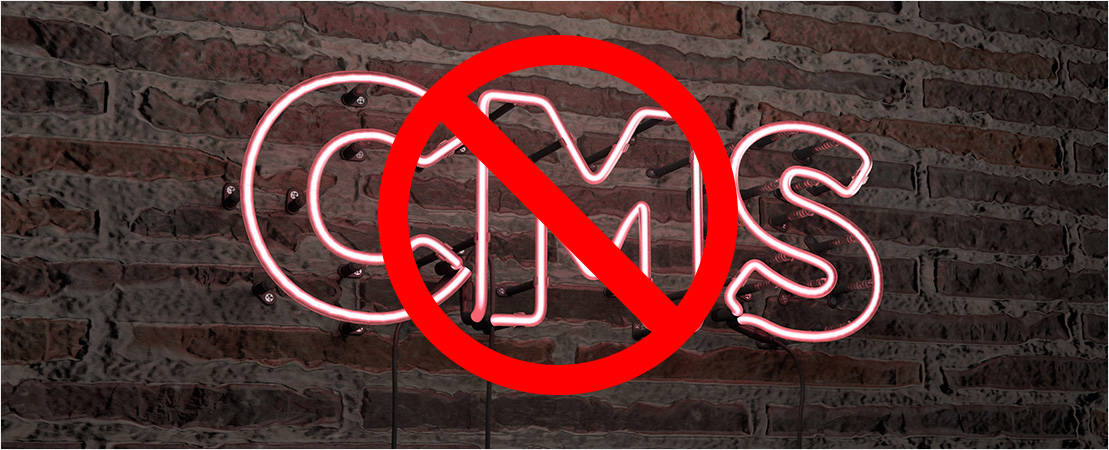Even though web design and development now pertain to a widespread skill-set that’s hardly uncommon – that is, in this digitally saturated age, it’s not hard to find someone who can actually build a decent website for you – not all companies are created equally.
Whether you’re dealing with phenomenally high costs, lock-in fees, unrealistic promises, or deals that sound too good to be true, having to deal with an unscrupulous web design company is a very real possibility in an oversaturated, hyper-competitive market.
To help you avoid a suboptimal situation – and, potentially, a huge waste of money – we’ve compiled seven red flags for knowing that the web design company you’re dealing with is awful.

1. You’re being promised a #1 spot on Google
This is a pretty common promise that less-than-scrupulous companies tend to make, especially during the initial sales phase.
It also pertains to a general digital marketing myth that circulates around SEO (“Search Engine Optimization”).
Frankly speaking, this is rubbish. No-one can promise you high rankings on Google. And if they do, they’re lying.
This comes down to a number of things. Firstly, everyone else – including your competitors – is using SEO to boost their website. Competition is very, very serious.
Secondly, Google’s ever-changing, elusive algorithm is a closely-guarded secret, and no-one knows exactly how it works.
You can, however, follow Google’s guidelines in relation to best optimization practice – for example, using well-chosen, well-placed keywords; filling your website with high-quality, original, authoritative content; providing a friendly and intuitive user experience; ensuring optimal site speed.
A good web design company will do this, organizing your SEO campaign around best industry practice, and explain it to you in turn without making unrealistic promises. There is nothing any web developer can do to ensure you are ranked #1 in a Google search.
Realistically, the target for SEO should be getting a site to the first page. Research shows that when customers use Google, they will cross-reference their searches across the entire first page. Searches will rarely go past the third page, though, which is a very good reason to do SEO in the first place.

2. They don’t ask enough questions
A good web designer should ask you lots of questions, especially before they actually start working on your project.
You should expect a flood of questions about your business objectives and plan, industry, competitors, clients, and target audience.
These kind of questions should start during the initial sales phase – before you actually agree to work with them – and then continue throughout every point of the process for the whole duration of the project.
No questions, or very few, is a very good indication that you’re dealing with a terrible web designer who doesn’t understand (and makes no attempt to understand) your website needs.
Here are just ten sample questions that are likely to come up if you’re dealing with someone who knows what they’re doing and is receptive to your requirements:
- What are your goals for your website?
- What purpose do you want your website to serve?
- Describe your typical customer
- Who is your target audience?
- Who are your major competitors?
- Are you doing any traditional marketing?
- Describe your brand
- Will you be able to provide content for the site?
- Will you be able to provide photos, videos, a logo, etc.?
- What kind of marketing are you interested in doing? Are you already on social media?
If your web designer doesn’t even venture into this line of inquiry, you have a problem.

3. Poor communication
Crappy communication or a bad attitude are immediate red flags that you may need to let go of your web designer.
Maybe they aren’t returning your emails or phone calls. Perhaps they’re avoiding deadlines, or not answering questions directly. Have they given you the impression that they haven’t heard or understood a word you’ve said? Possibly you don’t understand a word they say, because they speak in technical or highly industry-specific jargon.
Regardless, when the lines of communication are closed or confused, it may be time to move on.

4. No scope of work
Without a clear scope of work, a project is far more likely to fail – or, at the very least, encounter some serious hurdles.
A good scope of work details all work to be performed and delivered for the quoted price.
It is crucial that all parties agree to the scope of work presented before the project is commenced. This will prevent any misunderstandings or surprise additional costs, and will ensure that everyone is on the same page.
It’s also important that the scope is as specific as possible, especially in terms of what it doesn’t include, and that any ambiguities are clarified before the work is actually attempted.

5. No CMS
A Content Management System (CMS) is a web-based program or application that allows you to create, edit and manage your website content. It’s a way dynamically of cataloguing content in a database so that it’s easy for the owner of the website to update and maintain it themselves. WordPress and Drupal are examples of popular CMS options.
A CMS will allow you to change, edit and update text and images yourself – as well as other elements including hyperlinks, videos, and other elements like products and shipping details if you have an online store – once the site has been handed over with minimal stress or fuss.
Unless you want a website that just acts as a static business card for your company, you will most likely benefit from a CMS.
If your web designer isn’t suggesting a CMS, or seems confused when you mention the idea, you should probably be alarmed.

6. They don’t customize
In a saturated, competitive market, it’s imperative for your website to be unique. Your website should establish your point of difference – that which separates you from your competitors.
If your design company uses pre-designed, generic templates, consider this a warning sign. Generic might be easy and safe, but it’s not going to distinguish you from everyone else.
Don’t fall into the temptation of using a template. This may be a less expensive option, but will ultimately not work in your favor. Your website should be tailored to your particular needs as a business – there is no “one size fits all” website design because every business is different.
There are multiple reasons why custom design is far preferable. To name only a couple, your website will stand out, it will be tailored to your individual objectives and requirements, and it will be designed to be SEO-friendly.

7. You built it yourself using a web design tool
Anyone can learn how to use a cheap web design tool in an hour or so. Sure. However, you can’t learn what a good web designer has across years of experience. In other words, learning how to use a website builder won’t teach you how to design a website that will get targeted traffic, conversions and sales, nor will it make it particularly easy for you to create an intuitive site that maximizes the user experience.








